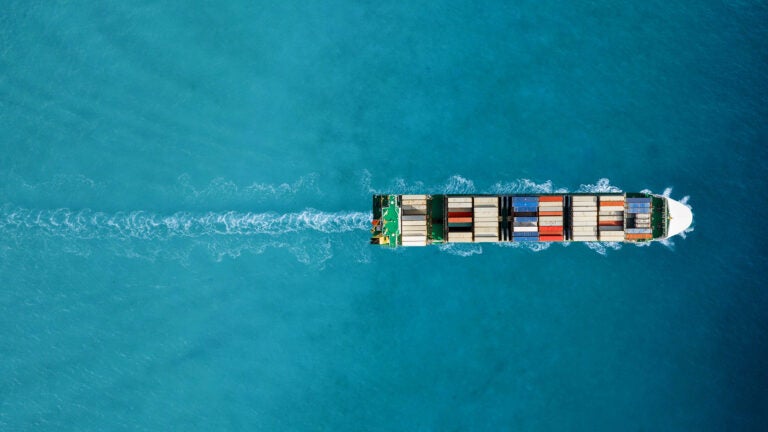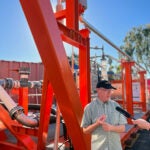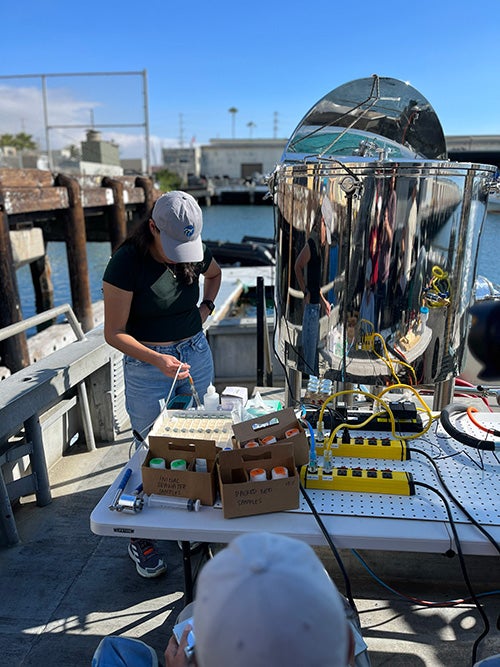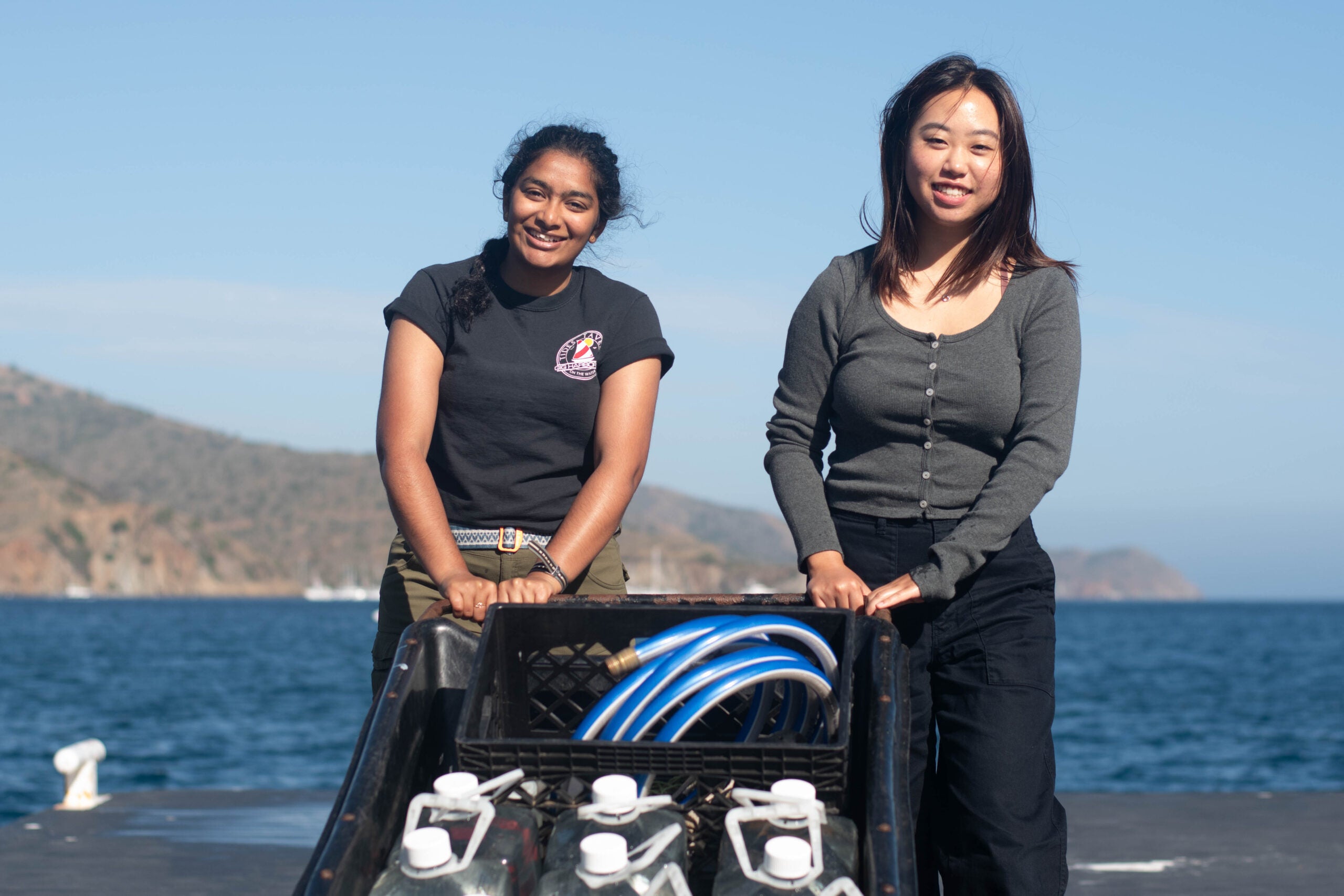
The global shipping industry alone contributes roughly 3% of global CO2 emissions. (Photo/iStock)
Ocean-inspired tech could speed up carbon capture from ships
New technology from USC and Caltech could significantly reduce the carbon footprint of the global shipping industry.
The ocean has a hidden talent, honed over millennia: the ability to capture and store vast quantities of carbon dioxide, a key driver of climate change. However, the ocean’s natural carbon capture cycles, which take hundreds of thousands of years, cannot keep pace with human-generated carbon emissions. The global shipping industry alone contributes roughly 3% of global CO2 emissions.

Now, a new technology inspired by the ocean itself offers a potential solution. Researchers at USC and Caltech, in collaboration with startup company Calcarea, have developed a device to capture carbon emissions directly from cargo ships and other diesel-powered vessels that support the global shipping industry.
“Our technology mimics the ocean’s natural carbon capture process but at an exponentially faster rate,” said William Berelson, the Paxson H. Offield Professor in Coastal and Marine Systems at the USC Dornsife College of Letters, Arts and Sciences and one of the project’s lead researchers. “What takes nature years, our reactors achieve in mere minutes,” said Berelson, who spoke with USC News at AltaSea, the public-private ocean institute headquartered at the Port of Los Angeles — one of the largest harbors in the world and the busiest port in the United States by volume.

Carbon capture: Tums for the ocean
The natural reaction in the ocean resembles a common household remedy: antacid tablets such as Tums.
Limestone, a type of calcium carbonate and the main ingredient in antacids, is abundant on the seafloor. Just like taking a tablet to neutralize acid in an upset stomach, the ocean uses limestone to neutralize the excess CO2 it absorbs from the atmosphere. The byproduct of this reaction is bicarbonate, a natural component of seawater.
The researchers’ technology, a pair of reactors aptly named Ripple 1 and Ripple 2, works similarly. The reactors presently route CO2 directly from engine exhaust and convert it into a solution slightly enriched with bicarbonate. This solution is then safely released back into the ocean with minimal impact on the water’s overall chemistry. Essentially, the reactors return water at a slightly saltier version of its natural state, with negligible impact on marine life.
From lab to sea
The reactor technology underwent rigorous development. The researchers developed the Ripple 1 prototype at USC’s University Park Campus to test carbon capture in ocean water under carefully controlled conditions.
Promising results from these initial tests paved the way for the Ripple 2 reactor. This iteration is currently undergoing testing at AltaSea. All along, USC scientists have been checking to see that Ripple effluent does not harm ocean life.
“The beauty of this technology lies in its scalability,” said Berelson, who recently won the USC Wrigley Institute for Environment and Sustainability Faculty Innovation Award in recognition of this carbon capture research. “Our goal is to develop this technology into a commercially viable solution that can be easily integrated into existing shipping operations. By implementing it on a commercial scale across the shipping sector, we hope to make a massive dent in global CO2 emissions.”

“Over 90% of the products we use in our daily lives traveled on a ship at some point. If we’re going to think about how to deal with our CO2 problem as a society, we have to be mindful of the fact that we can’t electrify all parts of the industry,” said Jess Adkins, founder and CEO of Calcarea and the Smits Family Professor of Geochemistry and Global Environmental Science at Caltech.
“Shipping is a good example of an industry that doesn’t electrify well. It’s hard to imagine ships running off batteries, even though we must, as a society, get ourselves onto renewable energy,” he said.
The technology is already gaining traction within the shipping industry. Calcarea recently announced a partnership with Lomar Shipping’s corporate venture lab, lomarlabs, to commercialize and deploy their shipboard carbon capture system.

“Our technology offers lower energy demands, lower costs, and has lower infrastructure requirements than comparable alternatives to cut emissions from shipping,” Adkins said. “But we need traction from ship owners and operators themselves to get our system out into the industry and in use. This collaboration will accelerate the testing and maritime engineering needed to get our system in use and, ultimately, reducing emissions.”



